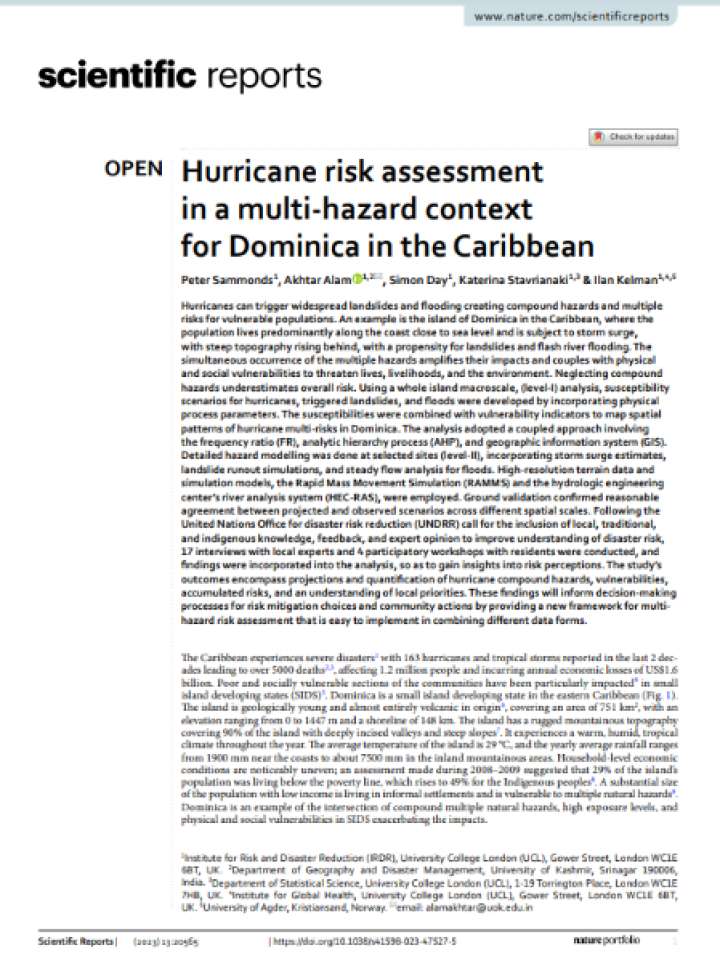Hurricane risk assessment in a multi-hazard context for Dominica in the Caribbean
Hurricanes can trigger widespread landslides and flooding creating compound hazards and multiple risks for vulnerable populations. An example is the island of Dominica in the Caribbean, where the population lives predominantly along the coast close to sea level and is subject to storm surge, with steep topography rising behind, with a propensity for landslides and flash river flooding. The simultaneous occurrence of the multiple hazards amplifies their impacts and couples with physical and social vulnerabilities to threaten lives, livelihoods, and the environment.
The susceptibilities were combined with vulnerability indicators to map spatial patterns of hurricane multi-risks in Dominica. The analysis for this study adopted a coupled approach involving the frequency ratio (FR), analytic hierarchy process (AHP), and geographic information system (GIS). The study’s outcomes encompass projections and quantification of hurricane compound hazards, vulnerabilities, accumulated risks, and an understanding of local priorities. These findings will inform decision-making processes for risk mitigation choices and community actions by providing a new framework for multi-hazard risk assessment that is easy to implement in combining different data form.
Explore further
